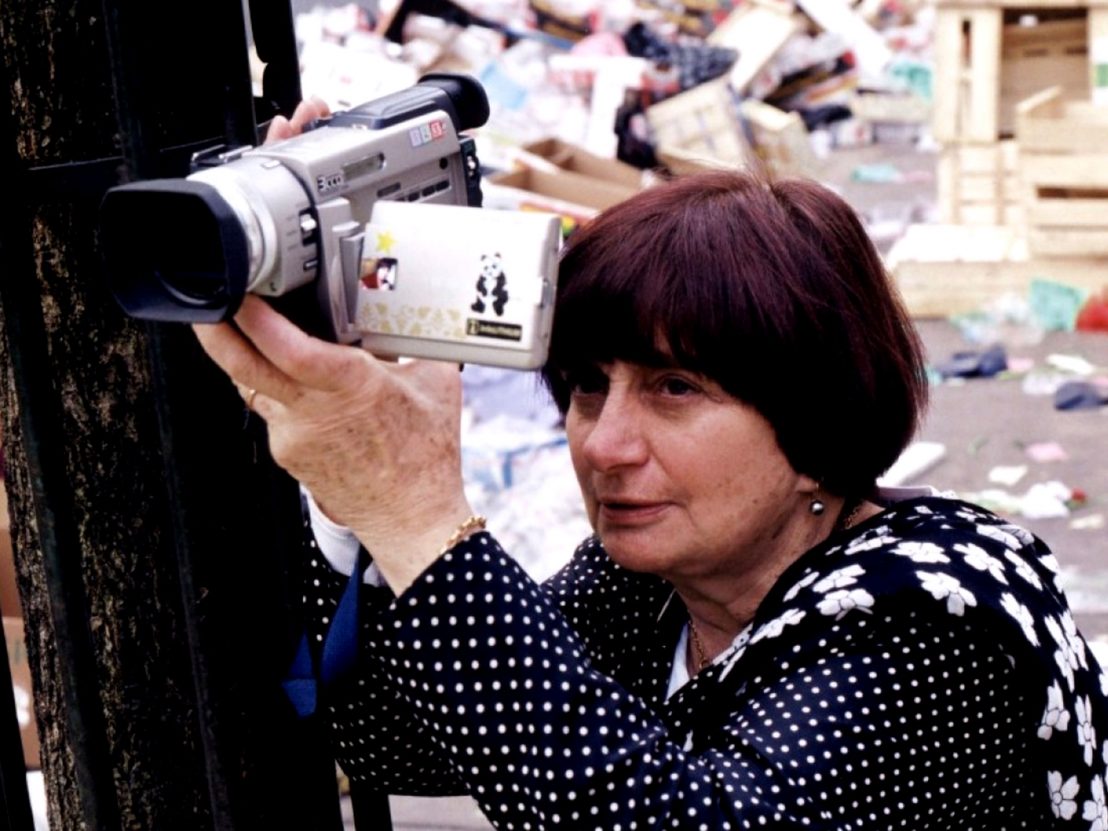
Personal odes to some of the finest women directors from around the world.
In celebration of 50 great female filmmakers from across the globe, we asked various LWLies’ contributors to describe the exact moment when deep admiration turned to intense love…
Scottish director Lynne Ramsay has constantly thrown me for a loop. But it’s always been my fault. Upon watching her first feature in college, 1999’s bruising and sublime coming-of-age film Ratcatcher, I felt certain a dynamic new voice had been born. It harboured similar qualities to many of the Neo-Realist films I was watching at the time in class: non-professional actors, long takes, and on-location shooting were all part of her process. This wasn’t just punishing poverty porn; ideas seeped from these cinematic pores.
Yet Ramsay’s approach to the gritty material felt far more kinetic than its Italian forebears. There was danger in every shot, a sense that the world could collapse at a moment’s notice. The story of a young Scottish boy learning to cope with a changing tide in his family made the type of impression that lasts a lifetime. Intense, life-changing, dialogue driven scenes developed slowly, and then would culminate in an explosion of violence or sudden loss. All of my bearings were thrown to the wind. David Jenkins
I fell in love with Amy Heckerling when, in Clueless, Cher (Alicia Silverstone), pressed to talk about that teenage obsession, virginity, says, “You see how picky I am about my shoes, and they just go on my feet.” A perfectly pert quip: hard to argue with, and delivered with the sparkling Valley Girl energy for which the film (also written by Heckerling) is justly famous. Throughout a somewhat patchy filmography (including Look Who’s Talking, episodes of Gossip Girl and the uncharacteristically clichéd I Could Never Be Your Woman) Heckerling has still proven herself to be one of the few directors respectful of girlish folly and possessed of a sly sense of visual humour. Abbey Bender
I’ve fallen for Mia Hansen-Løve so many times that it would be impossible for me to remember the first time it happened, but, as with all such things, the most recent occasion is the one I remember most vividly. It was towards the end of Eden, when I noticed that the protagonist – whose stagnant dream of becoming a prominent DJ keeps him in a permanent state of arrested development – hadn’t aged a day during the twenty years of his life covered by the film. That realisation illuminated something that resonates throughout each of the four effortlessly cool and endlessly empathetic features that Hansen-Løve has made to date: we all get old together, but everyone has to grow up on their own. David Ehrlich
I fell in love with Catherine Breillat when I heard about “menstrual tea”. Long before I saw any of her films I came across the tantalising and terrifying image of a bloodied tampon dipped into water and consumed – it was from her unfairly maligned 2004 film Anatomy of Hell. What mind would come up with such a charged image of aggressive femininity, and why had I not heard of her before? Breillat quickly became one of my favourite filmmakers, and while her work has consistently been described as cold and detached, for me it leaps off the screen with intense realism and sincere intimacy. Justine Smith
I fell in love with Kira Muratova entirely by accident. And she’s a director who – when her movies become a little more easy to see – I hope this love will blossom into something deeper and more meaningful. I was commissioned to write a short capsule essay on Andrei Tarkovsky’s 1966 existential epic, Andrei Rublev, and my editor said that I’d do well to watch some, what he termed “satellite titles,” by way of research. One of the films on this list was called Brief Encounters by the Ukrainian director Kira Muratova.
I had never heard of this film nor its maker, and from a customary delve through the catalogues of various commercial online film retailers, I was left none the wiser. This woman and her movie – at that time, which was circa 2008 – did not exist. I was utterly determined to see the film, especially as it had been aligned alongside a movie which I consider to be one of cinema’s great masterworks. DJ
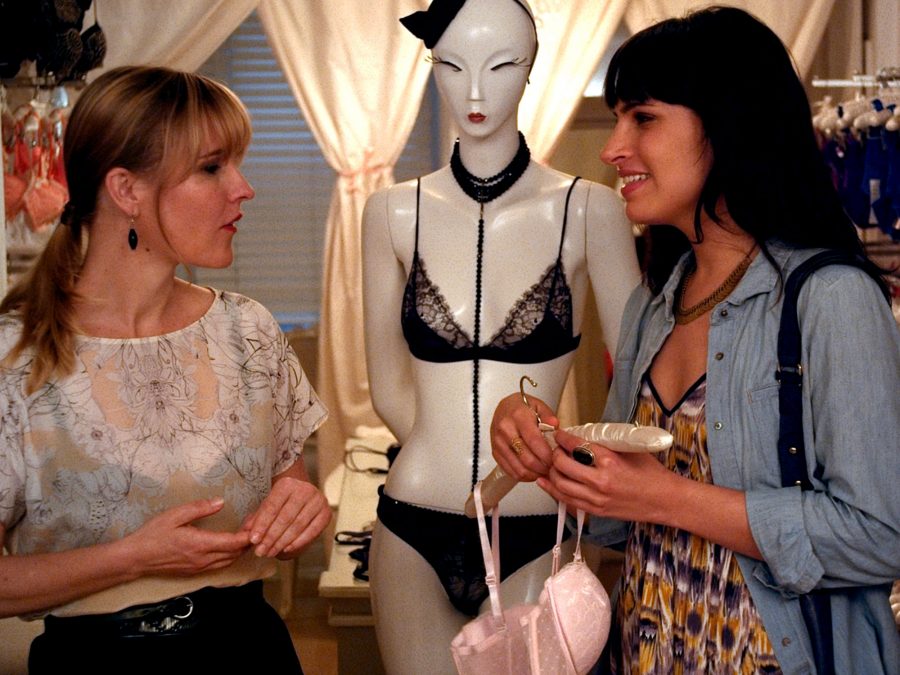
I fell in love with Desiree Akhavan at the moment in her debut Appropriate Behaviour when the witty surface drama gave way to a sprawling network of far-reaching concerns. Akhavan dangles comic and titillating cherries as she leads us into the neurotic space of a bisexual New Yorker who has yet to come out to conservative Iranian parents and whose soul sustenance is sucked off a dead relationship – recollected in flashback. The depth of the story legitimises Akhavan’s creative tactic of using her life as a direct reference, something she also does in her excellent web series The Slope, which lives up its irreverent tagline: ‘Superficial, homophobic lesbians’. Sophie Monks Kaufman
I fell in love with Mania Akbari’s work from the moment I saw the very first sequence of her 2011 film One.Two.One. That first sequence, over five minutes long, beautiful and complex, could only be made by a filmmaker completely in control of her medium, unafraid of being provocative, who understood the politics of gender and also the relationship of art to the reality of life around her.
So then I just had to learn more about Mania and find a way to see all her work that I could access. Her one and only ‘acting’ role was as star of Abbas Kiarostami’s Ten. I learned about her subsequent move into filmmaking and the three films which followed, the facing of her own mortality during a battle with breast cancer, and then her devastating decision to go into exile from her country, Iran, when it became obvious that the authorities there would always find a way of not allowing her films to be seen. It’s then that I understood a little of what went into making Mania Akbari, the bold and courageous and radical filmmaker that she is. Mehelli Modi
I fell in love with Claire Denis the moment in 1996’s Nenette et Boni when the rhythmic kneading of pizza dough turned into outright masturbation. Denis regular Grégoire Colin plays a pizza maker who lusts for a nearby baker, and one day the act of pounding out flour gets too suggestively overwhelming to ignore. It’s a great moment because it left me hanging as a viewer: one moment I was wondering if my overheated teen brain was leaping to polymorphously perverse conclusions about the increasingly frantic slapping sounds onscreen, the next moment I knew that I actually hadn’t overreached. Vadim Rixzov
I fell in love with Nicole Holofcener when I watched her 2001 film, Lovely & Amazing, and observed the sublimely ridiculous yet touching role she had written for Raven Goodwin – then aged nine. Her character, Annie is the youngest of three sisters and is a tubby black anomaly next to alabaster reeds, Catherine Keener and Emily Mortimer. Of the many concerns the older sisters have, Annie is not always number one. She handles this by feigning adulthood in a way that is endearingly at odds with her rampant immaturity. Holofcener creates airy environments and gives her characters the space to breathe and grow into their own eccentric shapes. SMK
I first fell in love with Josephine Decker in a bland, corporate room in an office building situated on Berlin’s bland, corporate Potsdamer Platz. It was during the 2013 Berlin Film Festival, and Decker was there doing press for both her debut narrative feature, Butter on the Latch, and its follow-up, Thou Wast Mild and Lovely. I was one of the first journalists to sit down with her. Within moments, we fell into an easy banter, and by the end, the interview transcended mere curious lines of questioning to reach a sincere, at times confessional, conversation. We talked about (and criticised) the lack of women writing about film, the expectations and pressures placed on female directors, and sex.
When her press agent came in to ask us to wrap up, Decker asked for more time. I was smugly pleased, but also genuinely happy that we could keep talking. When we finally parted ways, exchanging emails and promises to stay in touch, I felt that with this interview I had accomplished something; that the past few weeks spent in Berlin — where I had avoided any real semblance of labour in favour of wallowing in the bleakness that is the German capital in winter — was now justified. When I stepped out of the interview room, I went to check the sound on the tape. I hadn’t pressed record. Kiva Reardon
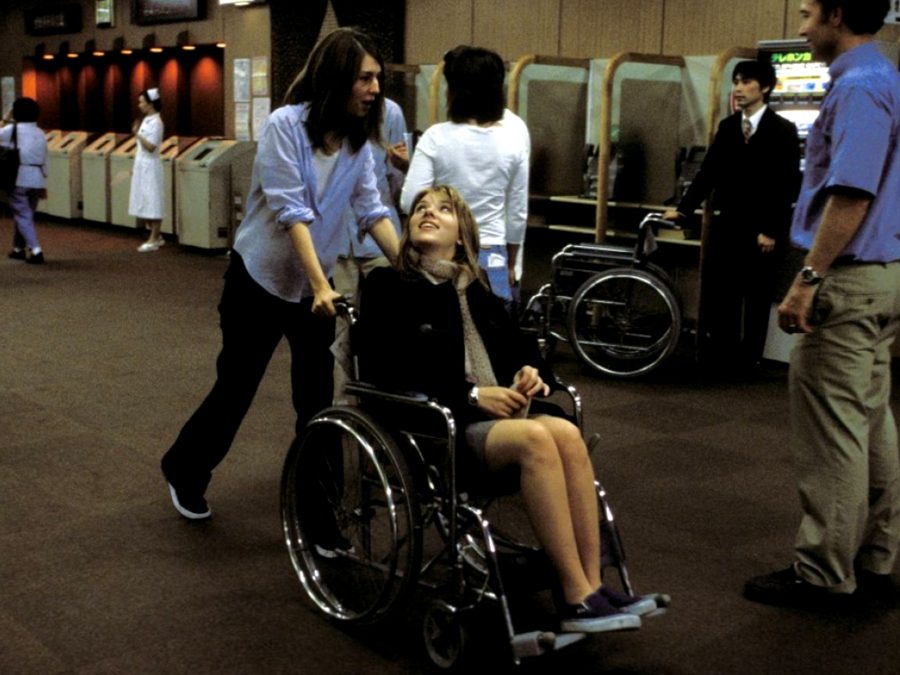
I fell in love with Sofia Coppola when I was 16. I was watching Lost in Translation, my vision fogged by a stream of salty tears, sobbing silently in a heap on my bedroom floor as Bob (Bill Murray) and Charlotte (Scarlett Johansson) hugged before parting on that busy street. The film’s opening shot, then 18-year-old Johansson’s derrière in see-through peach-pink knickers, is one of the film’s famed images. However, it is the following frame, of Johansson sat on her hotel windowsill, a lonely figure silhouetted against a twinkling Tokyo cityscape, that is emblematic of all that Coppola does best .Themes of heartbreak, isolation, depression and doubt plague Coppola’s characters, in spite of their glossy trappings. Her camera is drawn to surface beauty, but to call her cinema shallow is to miss her point entirely. Her films play in the space between vapidity, vanity and interior depth. Simran Hans
I met Maren Ade briefly once at the Locarno Film Festival; I wasn’t quite sure what to say to her, which is appropriate considering that her films are strung together out of awkward pauses and moments of indecision. Not that the friendly, self-effacing woman on the hotel patio bore much resemblance to her characters. In her two early features The Forest for the Trees and Everyone Else, Ade has staked out territory as a connoisseur of human cruelty and frailty. In their best moments, the films show these two qualities in close proximity to one another. Adam Nayman
I love how Austrian filmmaker Jessica Hausner makes movies about miracles. Sometimes these can include explorations of the supernaturally eerie (2004’s Hotel), or they can be miracles of a higher religious order (2009’s Lourdes) and they can even be the life or death decisions we make which appear to defy all known logic (2014’s Amour Fou). There’s a cold philosophy at play in her work, and some might see her as the female counterpoint to the iceman-in-chief, Michael Haneke. Yet Hausner’s films are permeated with bone dry humour and a sense of the absurd. She allows us to snigger at human naiveté, while never straying too far from her ambitions of honesty and earnestness. DJ
The moment I fell in love with Marjane Satrapi was the when Ryan Reynolds sat down to discuss the psychology of morality and choice with a dog, a cat and a severed head. That’s when it hit me, midway through 2015’s The Voices: Satrapi’s work is a source of such brilliance because it dares to confront the things we’re most afraid to speak of. Death, war, mental illness; yet not with that reserved, dignified purity of ‘respectable’ cinema but with the empathy and honesty needed to embrace life at its most rich and its most absurd. In short, Satrapi makes movies that feel truly alive. Clarisse Loughrey
I first fell in love with Mati Diop in Claire Denis’ 35 Shots of Rum. It was her first role, where she played Joséphine, the young, impossibly beautiful daughter of an immigrant, Lionel (longtime Denis collaborator Alex Descas). Diop was mesmerising. Though 26 at the time, she played Joséphine’s gradual individualisation (and sexualisation) as though she were just discovering her body and self.
Meeting Diop through the eyes of Denis was what I imagine it would be like if a best friend introduced you to a future life partner: this emerging actress came with the highest possible vetting — I was committed to following her career. Unsurprisingly, then, I fell in love with Diop all over again in 2013: during a retrospective of Denis’ work at Toronto Film Festival, the French director selected Diop’s A Thousand Suns as her Carte Blanche choice. KR
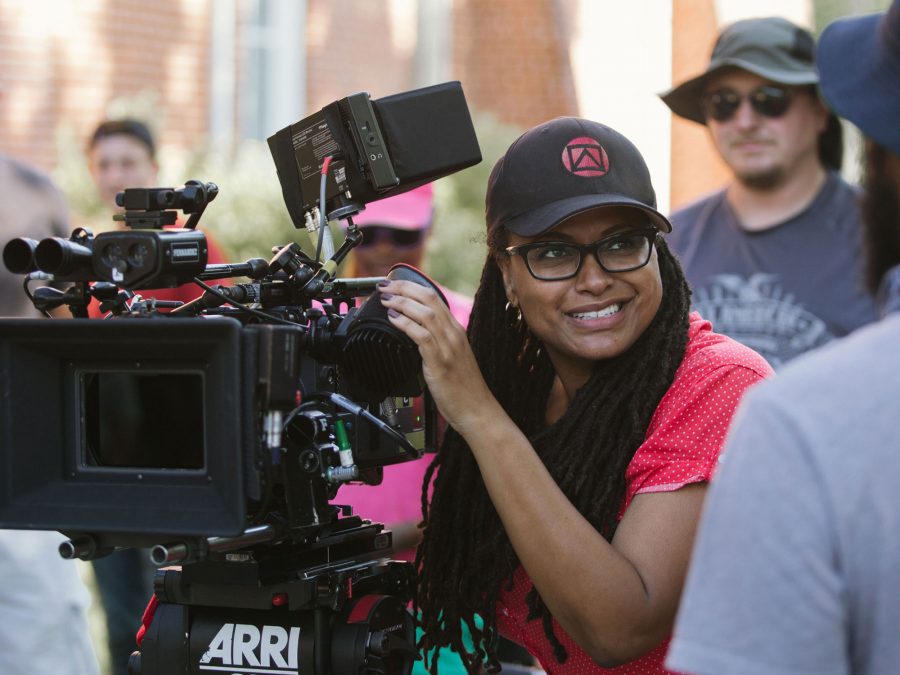
I fell in love with Ava DuVernay when the end credits rolled on her Martin Luther King/civil rights, drama Selma. That was the point at which I awoke from the spell the film had cast and began to consider its creator. DuVernay is a savvy craftswoman. Her background as a film publicist has drummed into her the necessity of narrative hooks and angles. She shoots at delicate political points and hits them with the surety of a Katniss Everdeen arrow. Yet she is full of hot feeling too. SMK
Having only directed two films, Russian-American filmmaker Julia Loktev has already established herself as a master of the wordless dramatic moment. Quiet, intense passages of emotional tumult are what initially drew me to the director’s 2005 anti-thriller Day Night Day Night. It’s an impressively minimalist debut that follows a newly recruited suicide bomber being prepped for an attack on a tourist destination in New York City. Despite the powder-keg subject matter, Loktev manages to convey a consistent sense of ambiguity in relation to the characters’ fluctuating motivations. GHJ
Samira Makhmalbaf’s 2000 film Blackboards was the first Iranian film I ever saw. It’s about a group of female teachers and the various alternate uses they have for the blackboards they carry on their backs, such as shields to protect from flying rubble caused by enemy fighters carpet bombing the mountainsides. I loved it so much that I sought out her previous film, The Apple, which is nothing less than a masterpiece. In the Iranian tradition – a tradition cultivated by her own father, the great Mohsen Makhmalbaf – it’s a film which blends the poetic and the realistic to talk about a society prone to censure, tyranny and inequality. DJ
I fell in love with Signe Baumane on discovering her 2008 animated short film series, The Teat Beat of Sex. ‘Surely you can’t show female sexuality and everyone’s genitalia so viscerally!’ I thought, in a happy shock state. The series is billed as ‘explicitly educational’. Lessons landed immediately. ‘This is how we blast through asphyxiating representations of femininity!’ Research revealed the existence of a feature that had played film festivals but had no theatrical release. In Rocks in my Pockets Baumane depicts mental illness with comic verve and shape-shifting visual flair. SMK
Cast your minds back to the summer of 2010. David Cameron was settling into Number 10, unemployment was at its highest level since 1994 and normal service resumed in England’s World Cup campaign as Fabio’s Flops returned home from South Africa following a 4-1 shellacking at the hands of Germany. For the working class people of Britain, these were desperate times. Step forward Clio Barnard, who announced herself as a bold new voice in the social realism scene with her vital docudrama debut The Arbor before enhancing her reputation three years later with The Selfish Giant, another stark, essential examination of poverty-stricken Britain. Adam Woodward
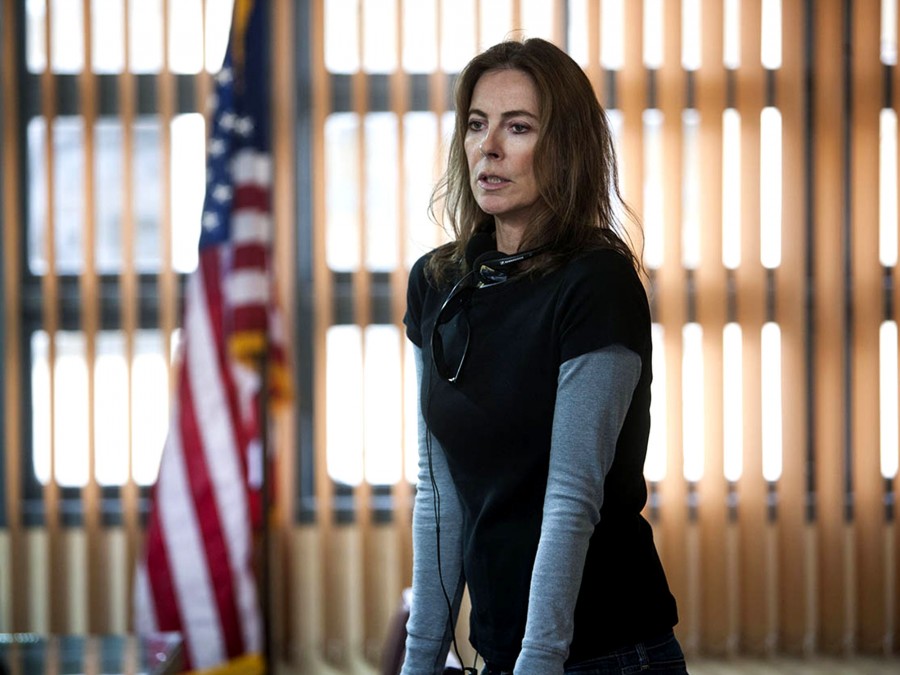
I fell in love with Kathryn Bigelow during my years as a film student at her alma mater, where I spent hours on end staring at the Strange Days poster that hangs in one of the classrooms. Sometimes it seemed like I could learn more about making movies from that clunky one-sheet than I could from the course. I’ll never forget the tagline, written in all lowercase: ‘new year’s eve 1999. anything is possible. nothing is forbidden.’ Those words seemed to perfectly sum up Bigelow’s ethos as a director, her career having been defined by shattering ceilings and telling stories that other filmmakers felt they didn’t have the clearance level to tell. I’ve seen most of her movies, but I still haven’t seen Strange Days. Nevertheless, I think I got the message. DE
I fell in love with Elaine May for the hundredth time when I went on YouTube to search out a speech she gave in 2010 in honour of her eternal comedy partner Mike Nichols’ American Film Institute Lifetime Achievement award. Taking the stage in front of a black-tie crowd that included Steven Spielberg, Shirley MacLaine, and any number of other luminaries, May gave a seven-minute master class in the art of the comic monologue – a brilliantly paced and delivered stream-of-consciousness routine to equal any of the skits she’d crafted decades earlier with the evening’s honouree at her side. “This is a very emotional night for me,” she began. “Because 10, 20, 30 years ago tonight… I bought this dress. I bought it for Mike’s first lifetime achievement award.” Adam Nayman
I’ll never forget the first time I encountered the prolific Heddy Honigmann. A large, excited crowd gathered in a cinema in Amsterdam where a festival (IDFA) were honouring the filmmaker by way of a Masterclass entitled Try a Little Tenderness. In 2014 she became the second director ever to receive the festival’s Living Legend award. Just like Paddington, Honigmann is an immigrant from darkest Peru where she lived with her Polish Jewish parents. She has since become a Dutch national treasure.
Her humane, compassionate and inquisitive nature shines brightly through all her films. She is particularly interested in music, memory, the outsider spirit and those affected by trauma and the mental and physical displacement caused by war. She is a keen observer who lets her camera linger and handles her questioning with sensitivity. But just like, say, Louis Theroux or Werner Herzog, she isn’t afraid to ask the difficult questions and dig deeper. Katherine McLaughlin
I fell in love with Laura Poitras about 80 minutes into the world premiere of CITIZENFOUR at the 2014 New York Film Festival, when the older couple sitting directly in front of me began to engage in a hushed but distractingly animated conversation with each other. I wanted to shush them, but I sure am glad that I resisted the temptation – when the lights came up, the chatty viewers were revealed to be Edward Snowden’s parents.
As they took to the stage for the post-screening Q&A, it was clear that Snowden’s mother and father (Elizabeth and Lonnie) were overwhelmed by the footage of their fugitive whistleblower son now enjoying a relatively peaceful life in Russia with his girlfriend. Surely they had been in touch with the 31-year-old ex-pat in the months since he leaked hundreds of thousands of NSA files to the public, but Poitras’ documentary seemed to frame Snowden’s efforts in a way that clarified the consequences of his ordeal for those closest to him. DE
Peer pressure as a dark gravitational force was the subject of Eliza Hittman’s offhandedly stellar 2013 debut feature, It Felt Like Love, about a latchkey New York teenager on the prowl for an easy sexual hook-up and, by extension, a queue-jump into adulthood. You might compare the film to Larry Clark’s Kids, though Hittman is less interested making garish statements about the corrupt, self-abasing Youth Of Today than she is exploring the sensitivities and burdens of being a young girl left largely to her own devices. DJ
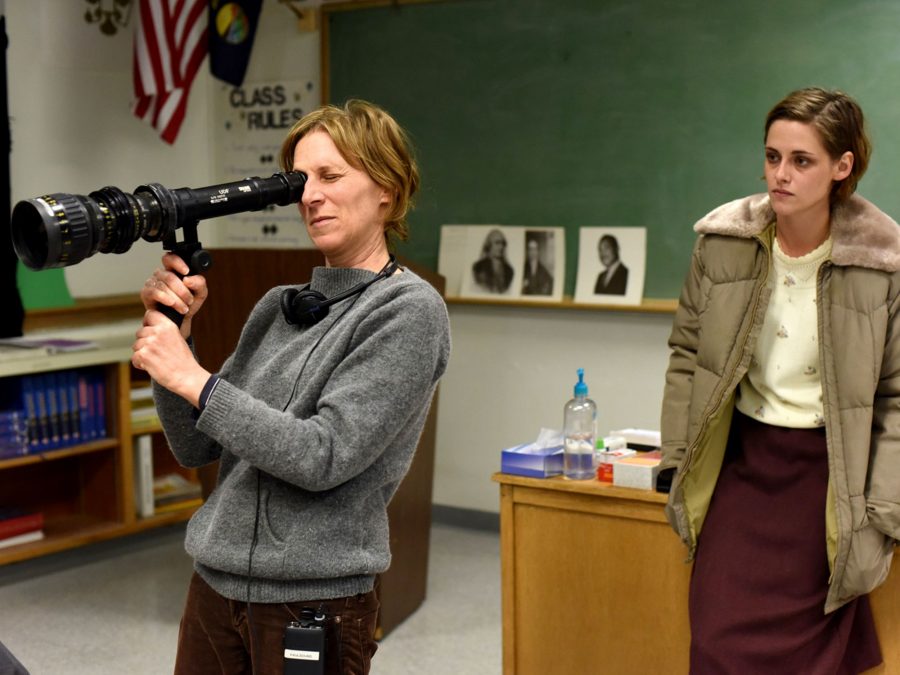
There’s a peculiarity among the critical community where certain cultural commentators like to take ownership of movie directors. That because they loved them first, their love matters more. They take ownership. And, hell, we’ve all done it. Seeing Kelly Reichardt’s Old Joy in 2006 was a slowburn revelation for me, a ‘small’ movie which focused tightly on nothing as a way to talk about everything. It’s a structurally-loose walking-and-talking movie which had had in fact been engineered with the utmost precision and sense of purpose.
I recall excitedly reading reviews out of Cannes of her 2008 follow-up, Wendy and Lucy, thinking that her formative greatness had now been set in amber and we had another master in our midst. Eventually seeing the film at a London press screening, I was reduced to a clammy mulch, blindsided by what I had just seen. It harks directly back to the unglamorous neorealist purism of Vittorio De Sica’s Umberto D, where looking at how simple social processes play out reveal multitudes about the bittersweet harshness of existence. DJ
I fell in love with Kim Longinotto when it became clear that she is the documentarian I had been looking for all my life. This was while watching Dreamcatcher in February 2015. I’ve been playing catch-up on her back catalogue since – not binging but leisurely snacking. Each film is to be savoured. ‘Savoured’ is a word I feel the need to justify considering that almost every film she makes is marinated in real-world brutality. I use it because I savour films that show me dark truths illuminated by a filmmaker’s bravery and brilliance. SMK
I fell in love with Jodie Mack as soon as she began imitating the guitar solo from the end of Pink Floyd’s ‘The Dark Side of The Moon’ with just the waaoooms of her voice. Played over the shredding of hundreds of old posters, this moment from the finale of Dusty Stacks of Mom, Mack’s 2013 stop-motion rock musical, is the director at her most silly and smart. The over-the-top bombastic colours relish in the destruction of the remnants of a bygone era, while also suggesting a critique of the ideologies that define modern day life. Who says you have to be deadly serious to take down capitalism? Who says the avant-garde can’t be fun? Peter Labuza
Sometimes it’s love at first sight. Before I saw A Girl at My Door, I had not even heard of July Jung. It is, after all, the writer/director’s first feature. But when an arthouse heavyweight like Lee Chang-dong agreed to come on board as producer, and when an actress with the stature of Bae Doona was willing to sacrifice her pay to star in the low-budget production, there was good reason to suspect that this film would be something very special indeed. Trust me, when this girl comes knocking, she proves very hard to resist or ignore. Anton Bitel
I first fell in love with Joan Micklin Silver watching the conclusion of Hester Street, her 1975 feature debut, a period piece set in a few square blocks of Manhattan circa 1896. Yankel ‘Jake’ Bogovnik (Steven Keats), an Americanised, secularised Russian Jew, is walking down a mercantile street in the Lower East Side with his new Americanised, secularised Polish wife, Mamie (Dorrie Kavanaugh). After a great deal of trouble and money, Jake has obtained a writ of divorcement from his first wife, Gitl (Carol Kane), whom he married years ago in the Old Country before coming abroad alone, and whom he has found dowdy and infuriatingly old-fashioned ever since the day she arrived at Ellis Island.
Now Gitl walks the same street with her new partner, a Talmudic scholar named Bernstein (Mel Howard). Both she and Jake have gotten what they thought they wanted and are setting off to a new beginning on the gold-paved streets of the land of opportunity, but an abiding sadness hangs over the proceedings – one has a sense of the smallness of these lives, lived at the mercy of history, fashion, and the tectonic grind of the passing of generations. Nick Pinkerton
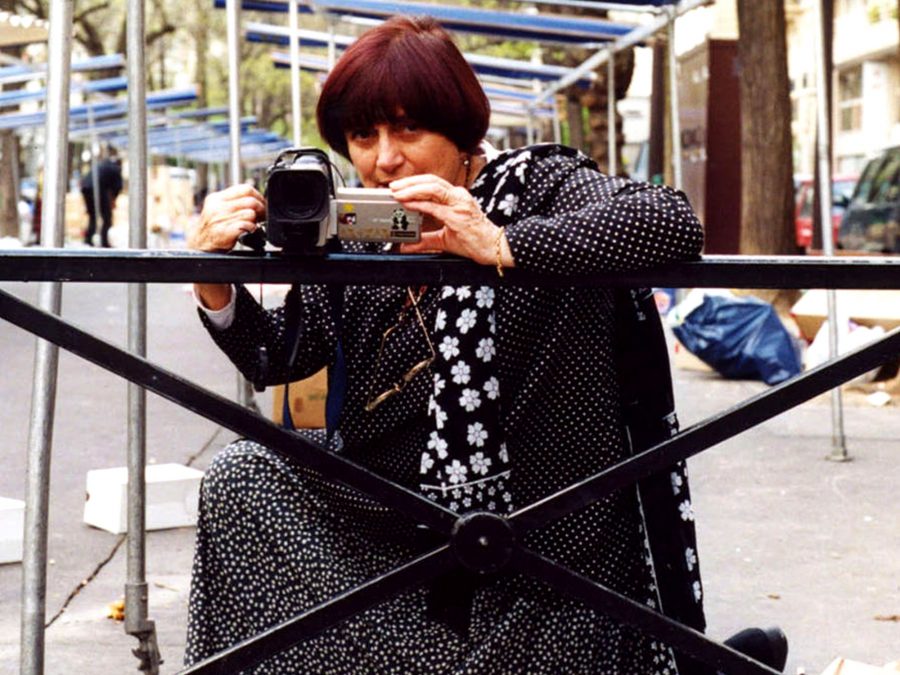
I fell in love with Agnès Varda at precisely the point where focus turns to a heart-shaped potato in her ultra-whimsical 2000 diary film, The Gleaners and I. That love was nourished further by her abiding dedication to her late husband, Jacques Demy, on whom much of her ’90s work focused, including the 1991 essay film/biopic hybrid, Jacquot de Nantes. She’s the sole female member of nouvelle vague – though she brushes off the title, a stalwart of European film feminism, an outspoken champion of female filmmaking and possessor of one of the most kaleidoscopically diverse film back catalogues out there. She is, in short, one of the greats. DJ
I fell in love with Lucrecia Martel at exactly the same time as everyone else did: During the first five minutes of La Ciénaga, in which the Argentinian director zombifies her country’s helpless middle-class into the cast of the most terrifying movie that George Romero never made. Also, I fell in love with Lucrecia Martel at exactly the same place as (almost) everyone else did: film school. Few contemporary directors have so quickly become ingrained in the curriculum – La Ciénaga was her debut, and it didn’t premiere until 2002 – but there’s nothing remotely academic about Martel’s style. In fact, her films represent everything they teach you not to do, her feverish rhythms and non-linear editing violating the sacrosanct “180 rule” at every available turn in her efforts to sustain the sense that her characters’ world is decomposing before your eyes. DE
My relationship with the films of Agnieszka Holland has been a love-hate affair: From admiration for her bold, acerbic fiction features, Woman Alone and Europa, Europa, to disappointments, such as with her remake of Rosemary’s Baby. Still, there is one feature that has turned me into a steadfast viewer. Based on a newspaper story and veiled in realist garb, 1992’s Olivier, Olivier is a pure blood horror picture, a wrenching reframing of motherhood as monstrous. Ela Bittencourt
I didn’t fall in love with French-Swiss director Ursula Meier at first sight, as I found her Godardian debut feature from 2008, Home, to be two thirds of a great movie. A kernel of hope for the future was planted and cultivated, however, and when her follow-up, Sister, dropped into competition at the 2012 Berlin Film Festival, a full-blown affair had been instigated. It’s hard to talk generally about Meier’s interests as a filmmaker, as her two fiction features are very different in many ways, though the latter of the two presents a filmmaker in immense control of both her stories and her actors. I’ll be first in the queue with a bullet when her next feature is revealed to the world. DJ
It was while stalking the career back catalogue of indie ad-lib duo the Duplass brothers that my love affair with Lynn Shelton began. At its heart, mumblecore is about capturing a certain authenticity. A flexible, loosely sketched out script acts as a springboard for performances informed by improvisation. The resultant films centre on the naturalistic, at times inconsequential conversations between characters, often captured in only a handful of prolonged scenes. Shelton employs the use of complex yet lighthearted narrative backdrops in which to illicit an uncomfortable but compelling realism from her cast. RE
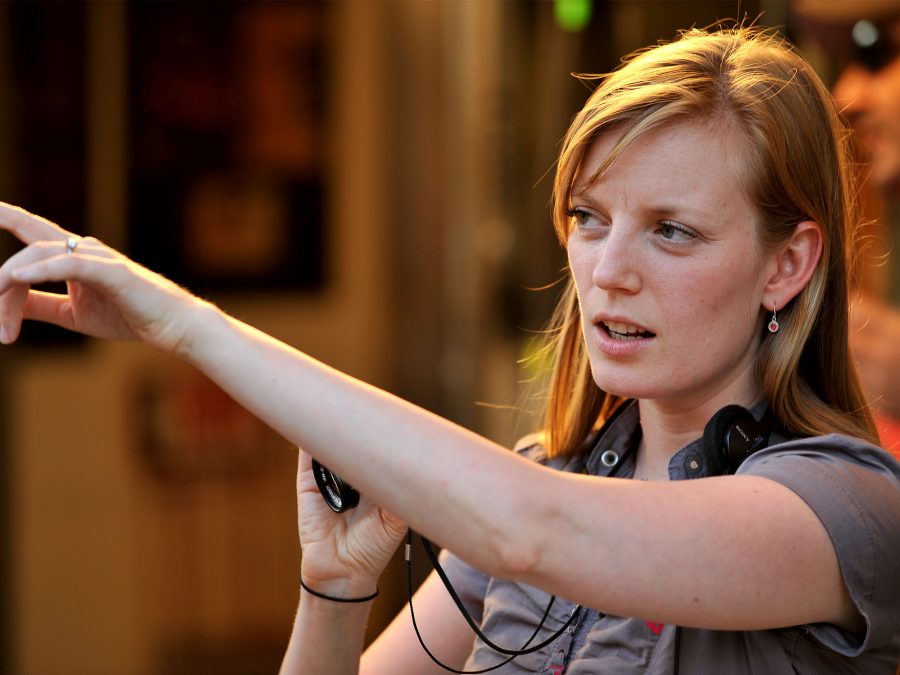
Few films have affected me quite as profoundly or as unexpectedly as Stories We Tell. The first time I saw Sarah Polley’s extraordinary cine-memoir was at the 2012 Venice Film Festival, where immediately after the film’s premiere I rushed outside and took out my phone – not to tweet my reaction or check my emails as habit typically dictates but to reach out to a close relative. Looking back, it’s hard to put a finger on what exactly came over me in that moment. I don’t consider myself a particularly emotional person, and nothing about the specific nature of the candid contributions from Polley and her family that comprise this personal investigation into identity, memory and truth resonated with me as such. It was simply – I subsequently reasoned – a beautiful piece of filmmaking. AW
Barbecued grasshoppers served piping hot on bamboo skewers is, most likely, the reason most people would’ve fallen in love with the South Korean-born, US-based writer/director So Yong Kim. Not through consumption of this popular snack food, but in witnessing two mop-haired Korean toddlers taking on the concept of economic self-sufficiency by way of creating their own ramshackle food vending business. This was central to her 2008 feature Treeless Mountain, which focused on a harried dirt-poor mother who all-but-abandoned her two young children so she could search for her estranged husband.
Far from attempting to produce a hectoring, outraged screed on poverty and shortfalls in social provision for single-parent families, Kim observes the honest fall-out from this situation: that the kids don’t really understand the nature of their predicament, that there will be a few tears, but their untainted vision of the world as a benign playground will reveal the true tragedy of this neglect. DJ
I fell in love with Gia Coppola during a car crash. Palo Alto, her one and only feature to date, begins with an unhinged teen accelerating a parked sedan directly into a cement wall. Kids. That collision — and the smash cut to the neon blue title card that immediately follows — was all it took for me to make room for a new member of cinema’s greatest dynasty. Of course, any praise of Coppola has to be accompanied by the standard disclaimer: While it’s true that her last name may have paved her a relatively easy road to the director’s chair, the fact that she chose to adapt her first feature from a collection of short stories by James Franco went a long ways towards levelling out the playing field. DE
I only needed to see the poster for Attenberg to fall in love with Greek director Athina Rachel Tsangari. That still image: two women with skirts hitched up and hands wrapped underneath their crotches. They’re standing in the glorious unification of sisterhood, a silent rebellion against the constraints of traditional femininity. And I fell for it, head over heels. In the way Tsangari so often pauses the narrative to cut back to these women, on the same piece of pavement, taking identical steps in identical dresses in some secret ritual of dance. CL
From the ominous, dusk-lit opening shots of Dominga Sotomayor’s brilliant 2012 debut feature, Thursday Till Sunday, it was obvious that we were in the rarified company of a special talent. Hailing from Chile and barely scraping 30 years, Sotomayor announced herself as a natural filmmaker – aware of space, aware of the frame, aware of how human interactions play out within the confined space of a family car, aware of how a story develops naturally, but also aware of more complex and unspoken issues within Chilean society. DJ
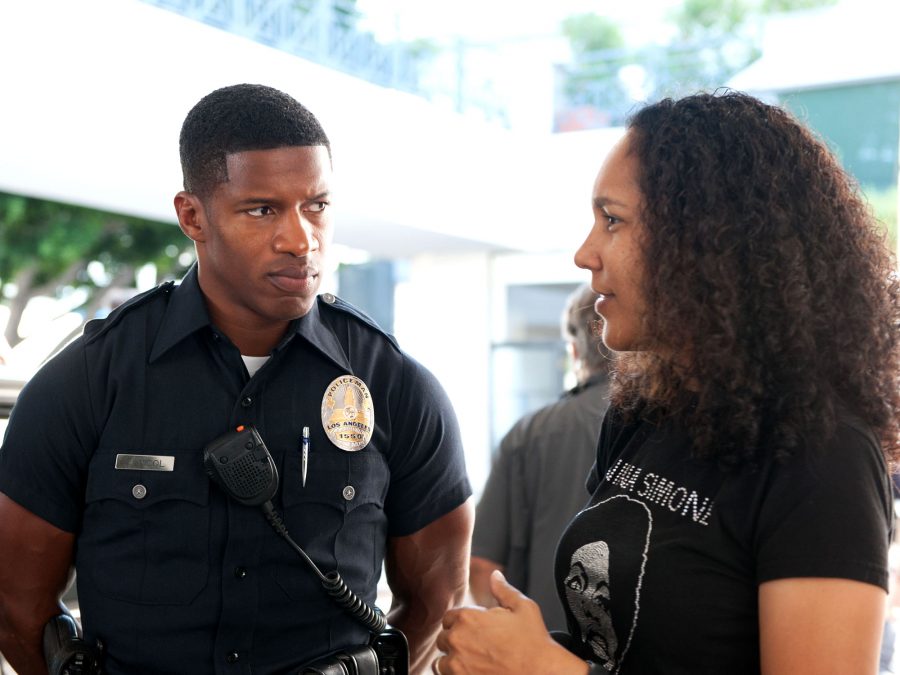
Love and Basketball made me like Gina Prince-Bythewood. Beyond the Lights made me love her. In cinema, melodrama has long been conflated with the ‘woman’s picture.’ Scholar Maria LaPlace describes this genre as one where, “love, emotion and relationships take precedence over action and events.” Films that focus on the hearts and minds of black women are few and far between. Imagine my delight, then, when I discovered Prince-Bythewood’s Beyond the Lights – a story of self-actualisation starring brown faces that wasn’t about slavery. SH
I fell in love with the idea of Stephanie Rothman before I’d seen any of her films. The prospect of a kind of feminist agent provocateur working inside the grindhouse business was just too good to be true, and if I put off watching her signature movie, Terminal Island, for some time, it’s partly because I was afraid of spoiling the idea of her films with actual experience. As it happens, Terminal Island is every bit worthy of its reputation. One of the female pioneers to work in exploitation idioms, Rothman’s films include the requisite amount of skin, but she is also uniquely attuned to the particular hazards posed to women, and the resiliency with which they manage to negotiate them. NP
I fell (even deeper) in love with Alanis Obomsawin when she said, “The last thing they wanted was an Indian to document anything”. This statement echoes through Canada’s history of genocide, oppression and erasure of native experiences, and lies at the heart of Obomsawin’s own radical documentary voice. 1971’s Christmas at Moose Factory is a film told through drawings of native children, and from the very beginnings of her filmmaking career, she gave a voice to her subjects. Combining her own soft spokenness with the narration of children, this film exemplifies the ordinariness of native life, foregoing both the romanticisation and vilification so present in popular culture. JS
I must confess that the directorial oeuvre of French director Pascale Ferran is little known to me, though I love her nonetheless. It was more a consummate affection when seeing her impassioned and heartily erotic 2006 take on Lady Chatterly’s Lover, though this developed into all-out adoration come half way through her highly divisive 2014 whatsit, Bird People. In that film, a two-part expressionist essay about personal freedom set in the highly unglamorous confines of an airport hotel, one character just randomly turns into a bird, and spends much of the second half just… flying around. On paper, it sounds godawful. On the screen, it’s transcendent and stirringly bold. DJ
Absence and intimacy are the twin pillars of Joanna Hogg’s cinema, in which we are invited to savour the contradictions of authentic, loving adult relationships set against austere backdrops. In each of her three films to date, 2007’s Unrelated, 2010’s Archipelago and 2013’s Exhibition, the British writer/director’s expert use of space serves to augment the emotional and physical disconnect between her characters. Yet while Hogg is often spoken of in formalist terms, the unmistakable human curiosity evident in her work means the precise dissections of middle class mores that she performs are anything but surgical. Excitingly, you get the sense the best is still to come. AW
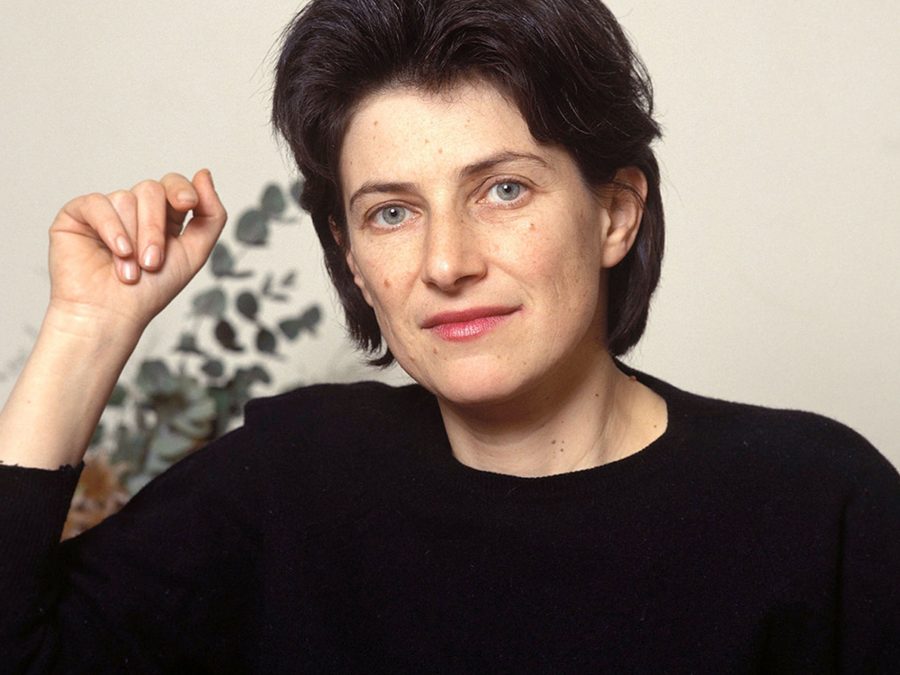
I fell in love with Chantal Akerman somewhere between East Germany and Moscow. Not literally, of course, though it may as well be, so evocative and transportive is her 1993 masterpiece D’Est. Essentially a visual diary of the Belgian director’s travels across the former European communist bloc, the film (whose title translates as ‘From the East’) in many ways encapsulates the many modes and methodologies with which Akerman worked throughout the most prolific phase of her career.
Like many of Akerman’s films, the politics of D’Est are embedded in the contextual details of its production, or felt in the margins of the narrative, rather than explicated in traditional storytelling terms. She’s one of the most political filmmakers I know, and yet not a single one of her films is about politics, or an overriding issue, or anything so blatantly topical. Jordan Cronk
I fell in love with Celine Sciamma when I saw the 10-year-old star of her second feature completely naked. Allow me to explain: Tomboy, a coming-of-age story that captures the purity and confusion of youth as perfectly as any movie ever made, follows an androgynous kid named Laure whose family moves to a new neighbourhood outside of France. Laure’s sex isn’t revealed until she’s shown taking a bath one evening, the camera confronting the anatomical truth that its young subject keeps like a secret. DE
In terms of love, it does help no end that Sally Potter is BFF with Tilda Swinton, the star of her revolutionary gender-switching, time-travelling 1992 feature, Orlando. But I fell in love with Potter after seeing her star in her own The Tango Lesson from 1997. It wasn’t so much that I was instantly beguiled by her on-screen presence, nor that the film itself brought on a frenzy of wild emotions. More that it seemed such a bold thing to make after Orlando, a film which had the guts to present its own maker as someone utterly determined to better herself and explore all of life’s potential pleasures. DJ
“This is the dog’s bollocks.” It’s not a phrase you would ordinarily expect to hear whilst watching the annual gush-a-thon also known as the Academy Awards. But that is exactly why I love Andrea Arnold, who said this to a bewildered array of unassuming, perma-tanned Hollywood types when collecting her Best Short Film award for Wasp back in 2005. It’s nice to think that perhaps led to certain members of the Tinseltown elite trailing the length and breadth of of the Urban Dictionary for a translation of this endearing colloquialism. RE
I don’t know if I exactly fell in love with Jen and Sylvia Soska when I saw their 2009 feature debut Dead Hooker in a Trunk, but the cartoonish exploitation pastiche certainly caught my eye. Made for $2500 (and it shows), Dead Hooker compensates for its truly low-rent production with sheer madcap punkish energy and verve. As well as writing, directing, producing, and doing all their own stunts, Jen and Sylvia also starred as twin sisters Geek and Badass – and somewhere between those two names/types lies the sensibility of both the filmmakers and their ideal audience. AB
This is an abridged version of a feature which was originally published in LWLies 60: the Eden issue.
Published 8 Mar 2017
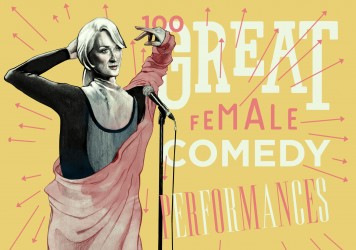
A tribute to some of the most memorable comic turns from women actors, featuring an immortal Meryl Streep.
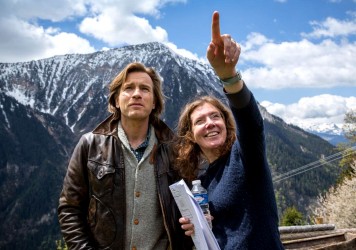
By Katy Vans
Directors like Susanna White should be helming major franchises.
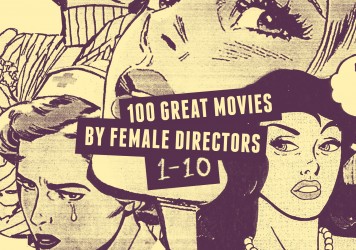
Read part one of our countdown celebrating the greatest female artists in the film industry.